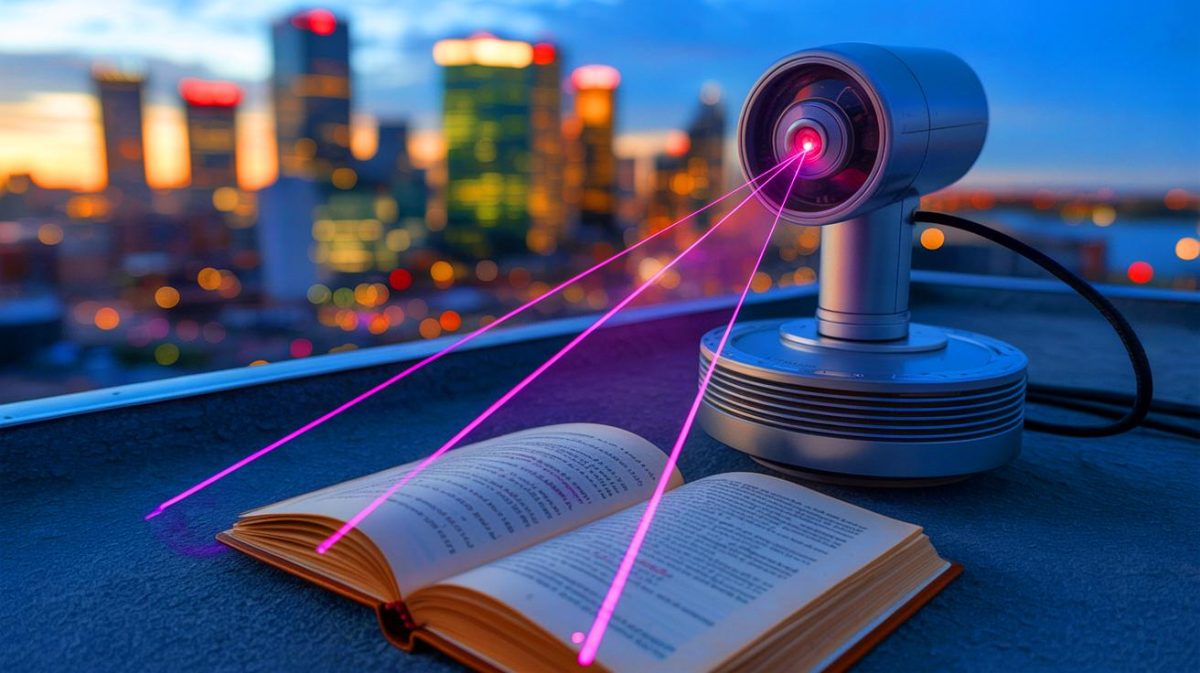
Wafricnews - June 17, 2025
In a jaw-dropping technological breakthrough that feels straight out of a spy movie, Chinese scientists have developed a device that can read pages of a book from nearly 3,200 feet away—without ever flipping it open. The invention, pioneered by researchers at the University of Science and Technology of China, uses a laser-powered interferometry system, raising eyebrows across the globe over its potential use in espionage and surveillance.
While Africa and other developing regions are still grappling with everyday security cameras and rudimentary surveillance tools, this innovation signals a giant leap in long-distance data extraction. The question now is—what does this mean for personal privacy in a digitally evolving world?
Interferometry: Borrowing From the Stars to Read on Earth
At the heart of this surveillance marvel is interferometry, a method long used by astronomers to study stars and galaxies. The Chinese team has reimagined it, swapping celestial mysteries for earthly secrets. By analyzing how light waves interfere with each other, scientists can now reconstruct clear images of distant text.
Instead of conventional light sources, the system relies on infrared laser beams, split into eight precise channels to maximize accuracy. These beams work in tandem to pick up subtle visual details—like the shape of a letter—as small as 3 millimeters across, even from nearly a mile away. This allows the device to ‘read’ through windows, across fields, or from rooftops, regardless of environmental disruptions like wind or dust.
Next-Level Vision with a Dose of AI
The researchers aren’t stopping at just remote reading. The next phase? Introducing artificial intelligence to analyze and interpret the visual data. This could turn the device from a powerful imaging tool into a full-blown surveillance system capable of processing massive volumes of visual information in real time.
Experts in optics, including Shaurya Aarav from the University of Sorbonne, have lauded the innovation for allowing scientists to analyze objects that don’t emit their own light. “We’re entering an era where light, distance, and even opacity may no longer be barriers to vision,” Aarav remarked.
Privacy Alarm Bells Ring Loud
Naturally, privacy advocates are sounding alarms. The ability to read what someone is looking at—without their knowledge—opens the door to serious ethical concerns. With surveillance technologies becoming more silent and sophisticated, critics argue we may be sleepwalking into an age of invisible intrusion.
For many Africans, where governmental transparency and surveillance oversight are already thin, the thought of such a device in the wrong hands is chilling. Could opposition leaders, activists, or even journalists become targets of such super-spying? Could private property truly remain private?
Scientific Milestone or Surveillance Nightmare?
There’s no doubt: the invention is a milestone. But as history has shown—from the misuse of drones to mass data collection—technologies built for good often fall into grey or dangerous territory without proper regulation.
The road ahead must involve clear ethical frameworks. Scientists, governments, and global tech organizations need to align on the dos and don’ts of such powerful inventions. The conversation can no longer be left to scientists alone—it must include civil society, human rights groups, and policymakers.
So, What Now?
As AI and laser-powered vision evolve, the world stands at a critical crossroads. Will we use this technology to enhance education, aid disaster relief, and advance science—or to deepen the surveillance state?
For now, one thing is certain: the line between science fiction and reality just got thinner. And for the average citizen trying to live freely in a digitized world, that’s both thrilling and terrifying.
By Wafricnews Desk.
By Wafricnews Desk.


Comment
To post a comment, you have to login first
LoginNo Comments Yet...